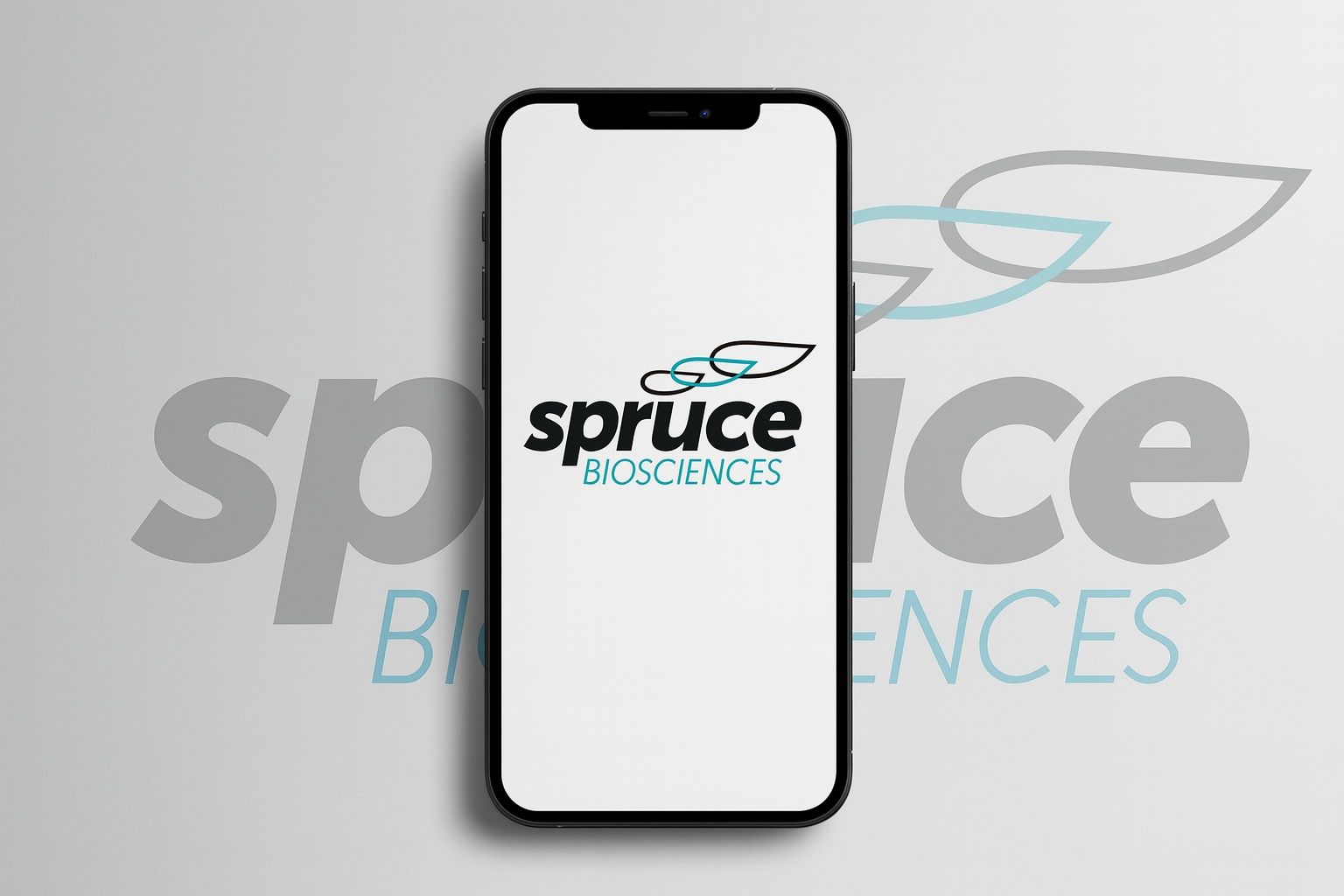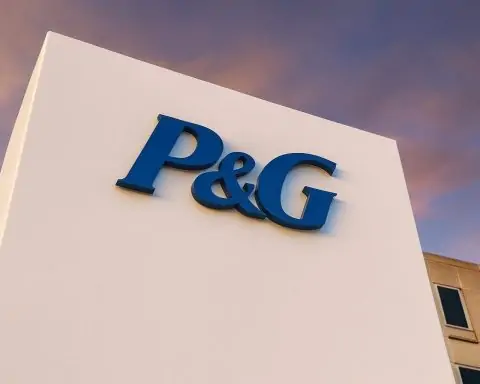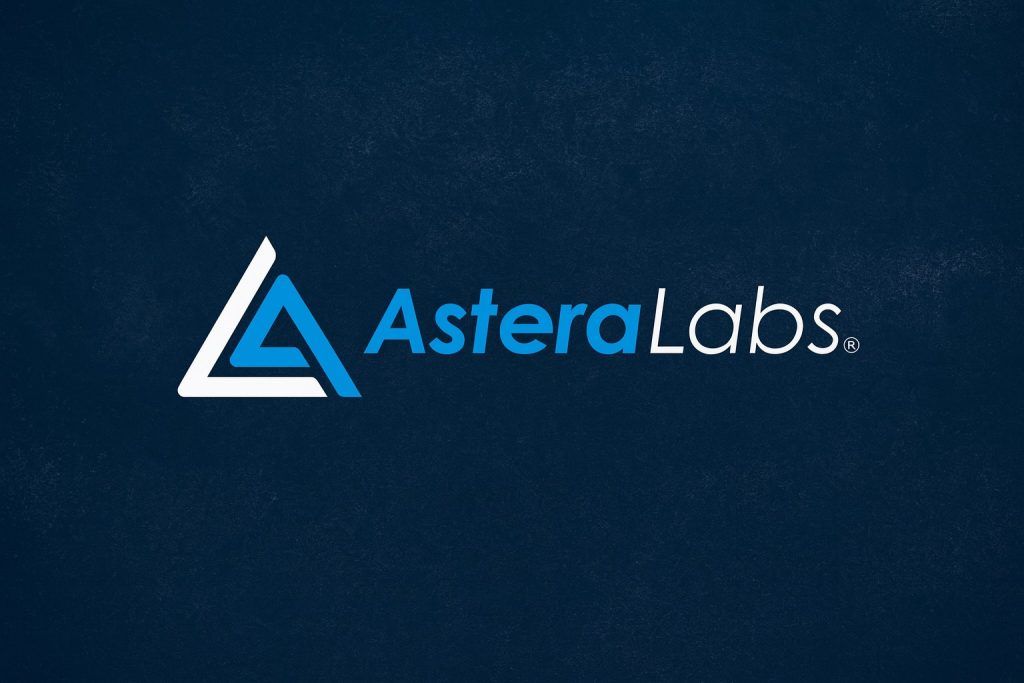- Soaring Stock Price: Spruce Biosciences (NASDAQ: SPRB) shares surged over 250% intraday on October 6, 2025 after announcing an FDA Breakthrough Therapy Designation for its lead drug, jumping from around $8–$9 to ~$31 per share [1]. Prior to this news, SPRB was trading at $8.82 (around a $4.8 million market cap) as of Oct 3, 2025 [2].
- Recent Breakthrough News: On Oct 6, Spruce revealed that the FDA granted Breakthrough Therapy Designation (BTD) to tralesinidase alfa (TA-ERT), its enzyme replacement therapy for Sanfilippo Syndrome Type B (MPS IIIB) [3]. This BTD status – supported by clinical data showing a profound biomarker response – confers expedited FDA guidance, rolling review, and priority review eligibility [4] [5]. Spruce remains on track to submit a Biologics License Application (BLA) for TA-ERT in Q1 2026 [6].
- Recent News & Catalysts: The Breakthrough designation comes just weeks after Spruce regained its Nasdaq listing. The company had been delisted to OTC in April 2025 due to a low share price, but executed a 1-for-75 reverse stock split in August to boost its price and meet Nasdaq requirements [7]. SPRB resumed trading on the Nasdaq Capital Market on Sept 15, 2025 under its ticker after regaining compliance [8].
- Pipeline & Product Developments: Spruce pivoted its strategy in 2025 to focus on TA-ERT for MPS IIIB after its previous lead program tildacerfont (for congenital adrenal hyperplasia) saw disappointing trial results in late 2024 [9] [10]. In April 2025, Spruce acquired TA-ERT from BioMarin and prioritized this ultra-rare disease therapy [11]. TA-ERT has Fast Track, Orphan Drug, and Rare Pediatric Disease designations in the US/EU [12] – meaning it could qualify for accelerated approval pathways. Spruce is also collaborating with HMNC Brain Health on a Phase 2 trial of tildacerfont in a subset of Major Depressive Disorder, repurposing that asset in a new indication [13].
- Financial Health: Spruce’s cash reserves were ~$16.4 million as of June 30, 2025, which it estimated would fund operations through end of 2025 [14]. This followed aggressive cost-cutting – including a 55% workforce reduction in April 2025 [15] – to extend its runway. The company’s burn rate dropped dramatically; it reported a Q2 2025 net loss of $2.1 million, versus a $9.2M loss in Q2 2024 [16]. Spruce has virtually no revenue (only ~$1.3M over the past three years) [17] and remains deeply unprofitable, with accumulated deficits (operating margins ~–3900% [18]). Key financial indicators signal distress – e.g. an Altman Z-Score of –23.3 (well into “distress” zone) [19] – underscoring the need for additional capital in coming months.
- Analyst Sentiment: Wall Street analysts are cautious on SPRB despite the recent breakthrough. Before the FDA news, consensus was Hold with 0 Buy, 4 Hold, 0 Sell ratings [20]. Many analysts had sharply cut targets after prior setbacks (median price target was around $1.00 pre-reverse-split [21]). As of now, sentiment remains tempered – GuruFocus reports a roughly “Hold” recommendation (3/5) with an implied target around $10 per share [22], reflecting significant upside from pre-rally levels but also skepticism. Analysts acknowledge the transformative potential of TA-ERT but highlight Spruce’s cash constraints and execution risks as key concerns going forward.
Stock Performance & Recent Price Action
Spruce Biosciences’ stock has been on a wild ride in early October 2025. Heading into this period, SPRB was a little-known micro-cap biotech trading in the high single digits (post-reverse-split). At the close on Oct 3, 2025, shares stood at $8.82 (market cap ~$4.8M) [23] after a period of relatively low activity. That calm shattered on Oct 6, when news of an FDA breakthrough designation sent the stock skyrocketing. SPRB opened the day with a huge gap up and at one point surged by 250–300% intraday, hitting roughly $31–$32 per share [24] [25]. Benzinga reported Spruce trading around $31.50 (+257% on the day) by midday on the 6th [26], and Stocktwits noted an extreme burst of bullish sentiment as the stock more than quadrupled at one point [27].
This explosive move marks a dramatic reversal of fortune for SPRB. Prior to the rally, the stock had been languishing after a tough 2024–2025 period (including a Nasdaq delisting). Even with a 1-for-75 consolidation, shares were relatively stagnant around the $8–$10 range. Year-to-date, Spruce was actually up about 98% (on a total return basis) just before the breakthrough news [28] – reflecting how beaten-down the stock was coming into 2025 and the modest recovery after restructuring. The Oct 6 spike, however, propelled SPRB to new heights, putting it well above its levels from a year ago [29]. Volatility remains extremely high – as is typical when a micro-cap biotech suddenly finds itself in the spotlight. Investors should be prepared for wide price swings. Indeed, after the initial euphoria, some profit-taking or pullback would be unsurprising given the stock’s multi-bagger jump in a single day.
Latest News: FDA Breakthrough Designation Triggers Rally
The catalyst for Spruce’s sudden surge was undeniably the FDA’s Breakthrough Therapy Designation (BTD) announcement on October 6. Spruce Biosciences disclosed that its investigational therapy tralesinidase alfa (TA-ERT) received BTD status for treating Sanfilippo Syndrome Type B (MPS IIIB) [30] – a major milestone for the company. BTD is a coveted designation the FDA grants to expedite development of drugs for serious conditions with preliminary evidence of substantial improvement over existing options [31] [32]. In Spruce’s case, the designation was backed by integrated long-term clinical data showing that TA-ERT dramatically normalized a key disease biomarker in the cerebrospinal fluid of treated patients [33]. Notably, the FDA confirmed that reduction in this biomarker (CSF heparan sulfate non-reducing end) is “reasonably likely to predict clinical benefit,” meaning it could serve as the basis for Accelerated Approval [34]. This is highly significant – it signals that Spruce may be able to file for approval on the strength of biomarker outcomes rather than waiting for full clinical endpoint results, potentially shaving years off the timeline.
Spruce’s management hailed the designation as validation of TA-ERT’s potential. “This designation highlights TA-ERT’s potentially transformative clinical impact as the first disease-modifying therapy to treat MPS IIIB,” said CEO Javier Szwarcberg [35] [36]. Along with Breakthrough status, Spruce reiterated that it is preparing to submit a BLA in Q1 2026 for TA-ERT [37]. The FDA’s willingness to work closely with Spruce under BTD (with intensive guidance and a rolling review of data) could enable a much faster review once that BLA is filed [38]. Spruce has also previously secured Fast Track, Orphan Drug, and Rare Pediatric Disease designations for TA-ERT in both the U.S. and EU [39], underscoring the therapy’s importance for an ultra-rare, fatal condition. (The Rare Pediatric Disease status could entitle Spruce to a valuable priority review voucher upon approval, which can be used or sold to expedite another drug’s review in the future.)
The Breakthrough announcement received widespread positive coverage, immediately shining a spotlight on this tiny biotech. Marketscreener, Nasdaq.com, and other outlets noted that SPRB stock “surged” on the news [40] [41], and Investing.com reported a ~60% jump in pre-market trading right after the 8:00am press release [42]. As the trading day wore on, momentum built, with retail traders on Stocktwits driving sentiment from bullish to “extremely bullish” en masse [43]. By early afternoon, SPRB was up over 250% and even briefly halted for volatility, before closing the day with roughly a 3-fold gain. The breakthrough designation is clearly seen as a game-changer for Spruce, offering a potential fast-track to market and significantly elevating the company’s profile in the biotech community.
It’s worth noting that no other major news (e.g. earnings or new partnerships) coincided with this jump – the BTD alone was the catalyst. However, this news came on the heels of another important event for Spruce: the company’s return to Nasdaq trading at the start of Q4 2025. On September 15, 2025, Spruce Biosciences resumed trading on Nasdaq under ticker “SPRB” after a period on the OTC markets [44]. This relisting removed a liquidity overhang and made the stock more accessible to institutional investors again. While the relisting itself did not cause nearly the splash that the FDA news did, it set the stage by signaling Spruce had stabilized its share price and compliance status. The combination of being back on a major exchange and then securing a breakthrough designation within weeks created a perfect storm for the stock’s October rally.
Pipeline Overview: From Setbacks to a Rare Disease Focus
To understand Spruce’s current situation, it’s important to review the evolution of its pipeline and strategy. Until late 2024, Spruce Biosciences was primarily focused on tildacerfont, a small-molecule drug aimed at treating congenital adrenal hyperplasia (CAH) – a rare endocrine disorder. Tildacerfont had shown promise in early trials, and Spruce was running two Phase 2 studies (CAHmelia-204 in adult CAH, and CAHptain-205 in adult/pediatric CAH). Unfortunately, in December 2024 the company reported disappointing topline results: the Phase 2b CAHmelia-204 trial failed to meet its primary endpoint (it did not significantly reduce glucocorticoid use vs. placebo) [45]. The companion trial suggested that higher or more frequent dosing might be needed for any efficacy, but those adjustments were not part of the original protocol [46]. Given the lackluster outcomes, Spruce discontinued further development of tildacerfont for CAH and announced it would wind down investment in that program [47] [48]. This was a heavy blow – CAH was Spruce’s lead indication since its IPO, and the setback sent the stock tumbling (it dropped ~20% on the news [49], exacerbating a broader decline in 2022–2024 biotech).
In response, Spruce’s leadership quickly pivoted the company’s direction. In April 2025, Spruce unveiled a new corporate strategy centered on an entirely different asset: Tralesinidase alfa (TA-ERT), an enzyme replacement therapy for Sanfilippo Syndrome Type B (MPS IIIB) [50] [51]. Notably, Spruce acquired TA-ERT from BioMarin Pharmaceutical in that timeframe [52]. (BioMarin is known for developing therapies for metabolic diseases; presumably TA-ERT was a program BioMarin had advanced in early studies and Spruce saw an opportunity to bring it to market.) TA-ERT is a recombinant form of the human NAGLU enzyme, delivered via an intraventricular infusion to the brain, intended to halt the neurodegeneration in Sanfilippo B patients [53] [54]. Spruce’s gamble on TA-ERT made strategic sense: Sanfilippo syndrome type B is an ultra-rare and fatal pediatric disease with no approved treatments [55], representing a high unmet need. Impressively, TA-ERT came with a strong package of existing data – by 2025, about 22 patients had been treated across multiple studies, with up to five years of follow-up in an open-label extension [56]. Those studies showed that TA-ERT dramatically clears the toxic heparan sulfate storage material from the cerebrospinal fluid and appears to stabilize cognitive function and brain volume in children with MPS IIIB [57] [58]. In other words, TA-ERT might actually modify the course of this deadly disease, rather than just manage symptoms.
Spruce’s swift refocus on TA-ERT was accompanied by securing special regulatory statuses to smooth its development. Even before the October Breakthrough designation, TA-ERT had already been granted Fast Track designation, Orphan Drug status, and Rare Pediatric Disease designation in both the U.S. and EU [59]. These designations not only underscore the therapy’s potential importance but also confer benefits – e.g. Orphan status gives market exclusivity and tax credits, Fast Track allows more FDA interactions, and Rare Pediatric Disease designation makes Spruce eligible for a Priority Review Voucher if TA-ERT is approved (a voucher that could be worth ~$100M+ if sold). Furthermore, Spruce disclosed that the FDA had confirmed the key biomarker (CSF HS-NRE) as a surrogate endpoint acceptable for Accelerated Approval [60] – essentially green-lighting the approach of approving the drug based on biomarker improvement given the impracticality of lengthy trials in this population. All these factors laid the groundwork for the Breakthrough Therapy grant and have put Spruce in a position to potentially deliver the first-ever treatment for Sanfilippo B.
Aside from TA-ERT, Spruce has kept one foot in its original area of expertise – endocrine disorders – but with a twist. The company found a new angle for tildacerfont by partnering with HMNC Brain Health, a precision psychiatry company. HMNC is sponsoring a Phase 2 trial called TAMARIND, testing tildacerfont in a subset of Major Depressive Disorder (MDD) patients who exhibit a specific biomarker profile (presumably related to abnormal stress hormone regulation) [61]. Tildacerfont modulates the CRF (corticotropin-releasing factor) pathway, which could be relevant in certain stress-related depression subtypes. This collaboration (Spruce refers to the program as “Tildacerfont/Cortibon” in partnership with HMNC [62]) allows Spruce to repurpose its once-failed asset in a new domain without devoting much internal capital – HMNC handles the trial, while Spruce could benefit if it yields positive results. It’s a relatively low-risk, optionality play for Spruce’s pipeline. However, the core value driver for now is clearly TA-ERT in Sanfilippo syndrome. With tildacerfont off the books financially (no ongoing CAH trials) and only a partnered psych trial ongoing, Spruce is essentially a one-product company laser-focused on getting TA-ERT approved.
Financial Overview: Cash Runway and Burn Rate
Spruce Biosciences’ financial health reflects the story of a small biotech that faced near-extinction and made drastic cuts to survive long enough for a comeback. The company’s latest reported figures (from the Q2 2025 earnings and corporate update) show cash and equivalents of $16.4 million as of June 30, 2025 [63]. Management indicated this would be sufficient to fund operations through the end of 2025 [64]. In biotech-speak, that implies Spruce likely has a runway into maybe early 2026 at best, assuming minimal revenue and that expenses don’t spike unexpectedly. Notably, Spruce had about $38.8 million in cash at year-end 2024 [65], so it burned roughly $22.4M in the first half of 2025 – a hefty burn rate. However, that H1 figure is skewed by the costs of running the now-halted CAH trials and one-time restructuring charges. Spruce undertook major cost-cutting in Q2 2025, including laying off approximately 55% of its workforce effective May 2025 [66] to conserve cash. The restructuring cost around $0.9M in severance, recorded in Q2 [67], but slashed ongoing operating expenses thereafter.
The impact of these cuts is evident in Spruce’s dramatically improved quarterly loss. In Q2 2025, Spruce reported a net loss of just $2.1 million, compared to a $9.2 million loss in Q2 2024 [68]. For a late-stage biotech, a $2M quarterly loss is extremely low – this suggests Spruce has pared down to a skeletal operational footprint. In fact, Spruce’s R&D spend in Q1 2025 was $10.8M [69] (when the CAH trials were wrapping up), but by Q2, R&D likely plunged to just a few million or less after terminating those programs. The company is essentially funneling most resources into regulatory and pre-launch activities for TA-ERT, while deferring any larger new trials. On the revenue side, Spruce has negligible income – it recorded $1.3 million revenue (likely from a prior partnership milestone or licensing deal) over the last three years, with no real growth [70]. There are no product sales yet (TA-ERT is not approved), and any collaboration payments (for instance, from HMNC Brain Health) appear minimal. Thus, Spruce is currently 100% reliant on its cash reserves and financing for survival.
Spruce’s balance sheet otherwise is relatively clean. It carries very little debt (debt-to-equity ratio of 0.14) and has a strong current ratio of 2.6 [71] [72], indicating decent short-term liquidity. However, these metrics mask the bigger risk: absolute size. With < $20M in cash and a tiny market cap (even after the post-news pop, market cap is on the order of ~$15–20M), Spruce will almost certainly need to raise capital within the next 6–12 months. The question is whether that comes via issuing equity, securing a licensing deal, or even an outright acquisition by a larger pharma. The recent Nasdaq relisting was crucial because it allows Spruce to tap capital markets more readily (e.g. through an ATM offering or secondary offering) now that its stock price is above compliance thresholds.
Investors should be aware that, despite the exciting FDA breakthrough, Spruce’s finances put it in a fragile position. In fact, objective financial health gauges rate the company as distressed. GuruFocus gives Spruce an Altman Z-Score of –23.26, deep in the “distress zone” (a very low or negative Z-score often correlates with high bankruptcy risk) [73]. This reflects the company’s accumulated losses and tiny asset base relative to liabilities. Another metric, the Piotroski F-Score, is 1 out of 9 – also a sign of poor fundamentals [74]. While these numbers are typical for pre-revenue biotechs, they underscore that Spruce must obtain additional funding to continue as a going concern beyond the next few quarters. On a positive note, the Breakthrough designation and Nasdaq relisting could improve Spruce’s financing options: it might attract a strategic partner or allow a capital raise at a less dilutive share price than before. But any such moves (e.g. stock offerings) could temper the stock’s upside in the near term. Investors will be closely watching Spruce’s quarterly updates for guidance on cash runway and plans to fund the pivotal development of TA-ERT through FDA approval and potential commercialization.
Analyst Opinions and Expert Commentary
Given Spruce Biosciences’ rollercoaster year, it’s no surprise that analyst coverage is tepid and somewhat out-of-date. Many Wall Street firms dropped or downgraded coverage of SPRB over the past 18 months as the stock cratered and the company flirted with delisting. Earlier in 2024, Spruce had a number of analysts from firms like RBC Capital, Oppenheimer, Guggenheim, JMP Securities, etc., but their ratings converged to neutral after the CAH trial failure. According to TickerNerd data, as of mid-2025 Spruce had 0 “Buy” ratings, 4 “Hold” ratings, and 0 “Sell”, i.e. a consensus Hold/Neutral stance [75]. Price targets from those analysts were all very low (the consensus target was cited as $1.00 per share on the old, pre-split basis [76], equivalent to $75 post-split – though that figure is somewhat misleading due to the reverse split mechanics). Essentially, analysts had almost written Spruce off, valuing it around its cash on hand given the uncertainty of its pipeline.
Now, with the breakthrough news, we may see some re-engagement or revised analyses, but caution is likely to prevail until more concrete progress is made. GuruFocus reports that the average analyst recommendation is still “Hold” (3 on a 5-point scale), and it notes a current target price of roughly $10 for SPRB [77]. This implies analysts see potential upside from pre-news levels but are nowhere near endorsing the stock as a strong buy yet. The rationale is straightforward: while TA-ERT’s breakthrough status is undeniably positive, Spruce’s risks (chiefly financial risk) are also very high. Any analyst modeling Spruce’s future has to account for likely dilution or funding needs, uncertainty on actual approval (the FDA could always require more data), and the market size limitations of an ultra-rare disease. Even if TA-ERT is approved, analysts will question whether Spruce – with its tiny infrastructure – can successfully commercialize it alone or if they would need a marketing partner.
At least one analyst has commented that Spruce may ultimately be an acquisition target if TA-ERT looks approvable. A larger biotech or pharma focused on rare diseases could find value in buying Spruce for the asset (especially to obtain the Priority Review Voucher that approval would grant, which itself can be worth a large sum). However, there’s no indication of any offers yet, and Spruce’s low institutional ownership (only ~4.8% of shares are held by institutions [78]) suggests the smart money hasn’t made a big bet here. It may be that funds were simply unable to hold SPRB while it was under $1 and delisted – with the stock back on Nasdaq and trading in the ~$20–30 range post-rally, we could see some institutional investors dip a toe in, especially those specializing in event-driven biotech plays.
Analyst rating changes are likely to follow upcoming events. Key events to watch: any partnership announcements (for example, if Spruce partners with a bigger company for TA-ERT in Europe or for commercialization, analysts would take that positively as it might bring non-dilutive capital), and of course the BLA submission in early 2026. If Spruce files the BLA on schedule and the FDA accepts it, that could prompt upgraded outlooks. Conversely, if Spruce has to do a large secondary offering of stock to raise cash, that could put near-term pressure on the stock and keep analysts sidelined. In summary, experts are in “wait-and-see” mode – impressed by the recent clinical/regulatory strides but well aware of the execution challenges ahead. The consensus for now is essentially “Hold – high risk, high reward.” As one source succinctly put it, analyst sentiment remains cautious on Spruce [79] despite the breakthrough excitement, pending clarity on how the company navigates its next steps.
Outside of Wall Street, the retail and biotech expert community has shown increased interest in Spruce post-BTD. On social platforms, some traders are very bullish, noting the tiny float and the possibility of further short squeezes or momentum run-ups. Others urge caution, reminding folks that fundamentals don’t change overnight – Spruce still has to prove it can get TA-ERT over the finish line and avoid running out of money. There’s also discussion of the competitive landscape (or lack thereof) for Sanfilippo syndrome. Spruce currently has a lead in MPS IIIB, but some gene therapy approaches are being studied for MPS III in academic or small company settings. Any emergence of a gene therapy cure could in the long run pose competition to Spruce’s enzyme therapy, though nothing is near-term on that front. For now, Spruce is in the rare position of potentially owning 100% of a niche market if it succeeds, which is both an opportunity and a challenge (they must create the market for a novel therapy largely by themselves).
Market Sentiment and Industry Context
Spruce’s story is unfolding against a backdrop of a biotech sector that has been extremely volatile over the past couple of years. Small-cap biotechs in particular have been hit hard by risk-off sentiment, rising interest rates, and a drought of funding that started in 2022. By late 2024, there were signs of cautious optimism returning to biotech – the SPDR S&P Biotech ETF (XBI), an equal-weighted index of biotech stocks, was up around 15% year-to-date by Q4 2024 [80], albeit still underperforming the broader market. Mergers and acquisitions have been a hopeful catalyst: big pharma is armed with record cash (over $1.6 trillion per EY’s estimate) and needs to buy pipeline assets to fuel growth [81] [82]. Investors have been looking for acquisition targets and “asset-centric” plays – essentially, companies that have one high-quality asset that could be bought out [83]. In this context, Spruce fits the profile of an asset-centric story (TA-ERT) that, if de-risked further, might attract a suitor. The fact that Spruce is targeting a rare (or “orphan”) disease could also work in its favor: a recent Raymond James survey noted that investors are currently most interested in rare disease and targeted oncology opportunities, and less interested in broader metabolic or CNS programs [84]. Spruce, having pivoted from endocrine/metabolic (CAH) to a rare pediatric neurological disease, is now aligned with what biotech investors are keen on.
That said, market sentiment for microcap biotechs remains highly selective. In 2025, generalist investors have not fully returned to funding small biotechs, except for those with either breakout clinical data or those riding hot themes (e.g. anything AI-related or certain gene editing plays). Spruce’s explosive move on BTD news is emblematic of how the market will reward tangible good news (the stock’s quadrupling shows the outsized reaction a tiny float can have to positive news). However, sustaining those gains will require follow-through. The biotech tape is littered with examples of small stocks that pop on news only to drift down afterward if no further catalysts occur.
Broader biotech sentiment heading into late 2025 is somewhat improved versus the prior year, but still cautious. The specter of rising interest rates (which increase the cost of capital for cash-burning biotechs) and macro uncertainties have made investors more exigent. Companies like Spruce, at the extreme end of small-cap, often face a “show me” attitude – they must continually prove they are making progress to justify investor confidence. On the positive side, if Spruce’s BLA filing stays on schedule and the FDA grants Priority Review (very possible with BTD and an unmet need), the approval decision for TA-ERT could come as early as late 2026. In the biotech world, that is relatively near-term, which could keep SPRB on radar for catalyst-focused investors.
Finally, it’s worth noting that Nasdaq listing compliance issues have been rampant among small biotechs, and Spruce was one of many to resort to a large reverse split in 2025. The successful relisting of SPRB on Nasdaq in September was a key confidence boost – it suggests the company is back in the game, so to speak, and not stuck in the OTC wilderness. This improves liquidity and might slightly broaden the investor base. Still, microcaps like Spruce remain speculative. The recent rally has likely drawn in momentum traders, which could lead to continued volatility unrelated to fundamentals.
In summary, the industry context is one of cautious optimism: biotech investors are slowly coming back to the sector but favoring companies with clear catalysts and differentiated assets. Spruce now has exactly that – a clear regulatory catalyst in motion and a one-of-a-kind drug for a dire condition – but it also embodies the classic risk of the sector, with extremely limited resources and a need for flawless execution. Spruce’s success will hinge on navigating this landscape by converting the current sentiment boost into lasting investor support or strategic partnerships.
Outlook and Investment Prospects
Looking ahead, Spruce Biosciences finds itself at a pivotal juncture. The FDA’s Breakthrough designation has, in a sense, given Spruce a new lease on life – it validates the scientific promise of TA-ERT and significantly raises the probability of eventual approval. If TA-ERT is approved, Spruce would go from a pre-revenue R&D outfit to the owner of a first-to-market therapy for a devastating rare disease. Given the lack of alternatives for MPS IIIB, market uptake could be strong despite the tiny patient population. Annual treatment costs for similar ultra-rare diseases often run in the six or even seven figures, meaning even a few hundred patients on therapy could translate to substantial revenue (tens of millions annually). Moreover, an FDA approval would earn Spruce a Priority Review Voucher (thanks to the Rare Pediatric designation [85]), which it could sell – recent such vouchers have fetched ~$100 million from big pharma, potentially exceeding Spruce’s entire current market cap. These factors underscore the potential upside if all goes well.
However, investors must weigh that against the formidable risks. The most immediate is financing risk: Spruce will likely need to raise capital in the relatively near term (possibly even before BLA submission, to ensure it can fund operations through the review period). Any equity raise could dilute existing shareholders. The severity of dilution will depend on how high SPRB’s stock price can remain – the higher it is, the more money Spruce can raise per share issued. The recent rally, if sustained, actually puts Spruce in a much better position to refill its coffers with less dilution. There is also a chance Spruce could secure a partner or grant to help fund the final leg to approval. For example, sometimes companies with Rare Pediatric designations get non-dilutive funding from patient foundations or industry grants, though no such deal has been announced yet.
Regulatory risk also remains until we see the FDA’s ultimate stance. While the Breakthrough and surrogate endpoint guidance are very encouraging, the FDA will still scrutinize the BLA thoroughly. Manufacturing an enzyme for central nervous system delivery is complex – Spruce will need to demonstrate consistent quality and safety. The FDA could conceivably ask for additional data (perhaps a larger confirmatory study, though they might approve conditionally first). If any surprise requirement arises, it could delay approval and increase cash burn.
Commercialization and execution risk: Assuming approval, Spruce would face the task of launching a therapy for a very rare disease. Often, small companies choose to partner with a larger pharma for commercialization in such cases, especially ex-US. Spruce has not indicated its commercialization plan yet. Going alone would require building (or outsourcing) a small specialty sales force to reach geneticists and pediatric metabolic specialists who treat Sanfilippo. It’s doable, but again requires capital. Partnering could bring in upfront cash but at the cost of sharing future profits. Investors will be keen to learn Spruce’s strategy here as approval nears.
From an investment standpoint, SPRB at this stage can be characterized as a high-risk, high-reward speculative play. The stock’s low float and recent momentum mean it could continue to trade erratically in the near term – further spikes are possible on any good news (or on takeover rumors), while setbacks or dilution news could send it plunging given how far it ran. For long-term oriented investors, the key question is whether Spruce’s current ~$15–20M valuation (post-rally) appropriately prices the risk/reward. On one hand, that valuation is extremely low for a company with a Phase 3/filing-stage asset with Breakthrough status – many comparable biotechs with late-stage orphan drugs trade at several times that market cap. This suggests upside potential if TA-ERT achieves approval and sales (or if a buyer acquires Spruce for the asset). On the other hand, Spruce’s precarious cash position and the need for dilution temper the upside – new shares or warrants might be issued that effectively raise the real market cap. Moreover, the addressable patient population for TA-ERT, while ultra-important for those families, is inherently limited, which caps the long-term revenue potential (i.e. Spruce will never be a large commercial company on this one product alone – peak sales, in a best case, might be in the low hundreds of millions annually, and that’s if global rollout succeeds).
In the short term, catalysts to watch include any updates in Spruce’s upcoming Q3 2025 earnings release (likely in November) – particularly any guidance on cash runway or partnership discussions – and then the BLA submission in Q1 2026. The mere act of filing the BLA could bump the stock if the market isn’t already pricing it in, as it would signal Spruce cleared the last hurdles in assembling its data package. Conversely, any delay in filing would be a red flag. Looking further out, FDA approval decision (potentially in late 2026 if priority review is granted) would be the make-or-break event; a positive decision could re-rate the stock significantly higher, whereas a rejection or major delay could be disastrous.
In conclusion, Spruce Biosciences has transitioned from a near-penny stock to a biotech comeback story in 2025. The FDA’s Breakthrough designation for TA-ERT has injected new hope and hype into the company, as evidenced by the stock’s explosive rally. Spruce now stands on the cusp of potentially delivering a lifesaving therapy for an ultra-rare disease – a laudable mission that also carries the promise of substantial value creation if successful. Yet, the path forward is fraught with challenges: funding needs, regulatory hurdles, and the execution of bringing a rare disease drug to market. For investors, SPRB offers a speculative bet on a binary outcome: either the company navigates these challenges and sees its value multiply, or it could stumble and revert to obscurity (with the ever-present risk of running out of cash). As of October 2025, the market’s mood has swung in Spruce’s favor, but only time – and rigorous FDA evaluation – will tell if this tiny biotech can truly sprout into a long-term success.
Sources: Spruce Biosciences press releases and investor updates [86] [87] [88]; Business Wire and BusinessWire via Yahoo Finance [89] [90]; Global Genes Rare Daily [91] [92]; Investing.com news reports [93] [94]; Benzinga and Stocktwits market coverage [95] [96]; GuruFocus financial analysis [97] [98]; TipRanks and analyst data [99] [100]; Stocktitan financial summaries [101] [102]; Pharmaceutical Executive commentary on biotech sector [103] [104].
References
1. www.benzinga.com, 2. www.stocktitan.net, 3. www.businesswire.com, 4. www.investing.com, 5. www.investing.com, 6. www.businesswire.com, 7. www.investing.com, 8. www.businesswire.com, 9. www.stocktitan.net, 10. www.stocktitan.net, 11. globalgenes.org, 12. www.stocktitan.net, 13. www.stocktitan.net, 14. www.stocktitan.net, 15. globalgenes.org, 16. www.tipranks.com, 17. www.gurufocus.com, 18. www.gurufocus.com, 19. www.gurufocus.com, 20. tickernerd.com, 21. tickernerd.com, 22. www.gurufocus.com, 23. www.stocktitan.net, 24. www.benzinga.com, 25. stocktwits.com, 26. www.benzinga.com, 27. stocktwits.com, 28. finance.yahoo.com, 29. stocktwits.com, 30. www.businesswire.com, 31. www.investing.com, 32. www.investing.com, 33. www.investing.com, 34. www.businesswire.com, 35. www.investing.com, 36. www.investing.com, 37. www.businesswire.com, 38. www.investing.com, 39. www.stocktitan.net, 40. www.nasdaq.com, 41. www.nasdaq.com, 42. www.investing.com, 43. stocktwits.com, 44. www.businesswire.com, 45. www.stocktitan.net, 46. www.stocktitan.net, 47. www.stocktitan.net, 48. www.stocktitan.net, 49. www.stocktitan.net, 50. www.stocktitan.net, 51. www.stocktitan.net, 52. globalgenes.org, 53. www.businesswire.com, 54. www.businesswire.com, 55. www.businesswire.com, 56. www.businesswire.com, 57. www.businesswire.com, 58. www.businesswire.com, 59. www.stocktitan.net, 60. www.stocktitan.net, 61. www.stocktitan.net, 62. www.gurufocus.com, 63. www.stocktitan.net, 64. www.stocktitan.net, 65. www.stocktitan.net, 66. globalgenes.org, 67. globalgenes.org, 68. www.tipranks.com, 69. www.stocktitan.net, 70. www.gurufocus.com, 71. www.gurufocus.com, 72. www.gurufocus.com, 73. www.gurufocus.com, 74. www.gurufocus.com, 75. tickernerd.com, 76. tickernerd.com, 77. www.gurufocus.com, 78. www.gurufocus.com, 79. www.gurufocus.com, 80. www.pharmexec.com, 81. www.pharmexec.com, 82. www.pharmexec.com, 83. www.pharmexec.com, 84. www.pharmexec.com, 85. www.stocktitan.net, 86. www.businesswire.com, 87. www.businesswire.com, 88. www.stocktitan.net, 89. www.businesswire.com, 90. www.stocktitan.net, 91. globalgenes.org, 92. globalgenes.org, 93. www.investing.com, 94. www.investing.com, 95. www.benzinga.com, 96. stocktwits.com, 97. www.gurufocus.com, 98. www.gurufocus.com, 99. www.tipranks.com, 100. tickernerd.com, 101. www.stocktitan.net, 102. www.stocktitan.net, 103. www.pharmexec.com, 104. www.pharmexec.com








